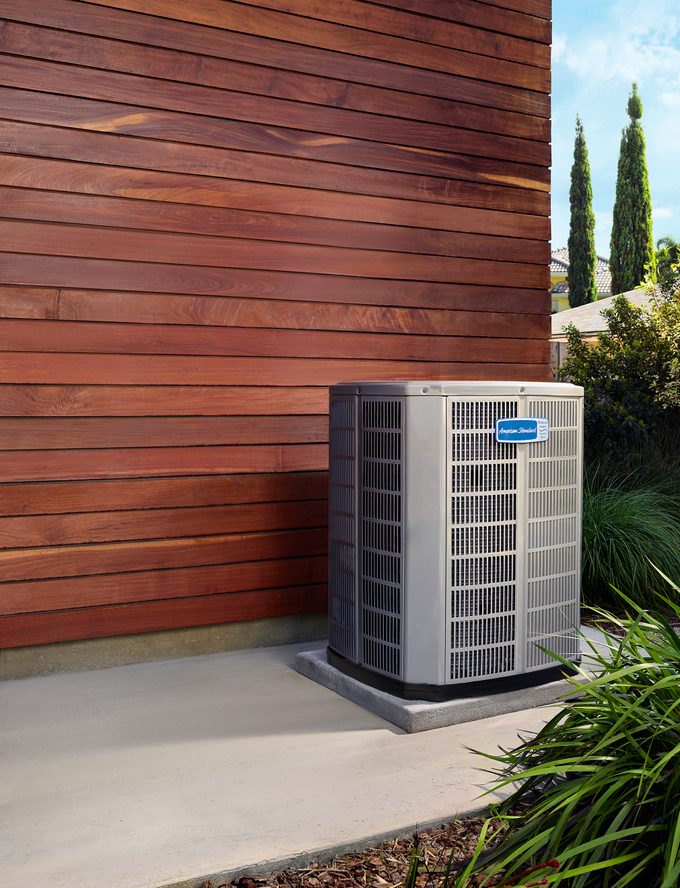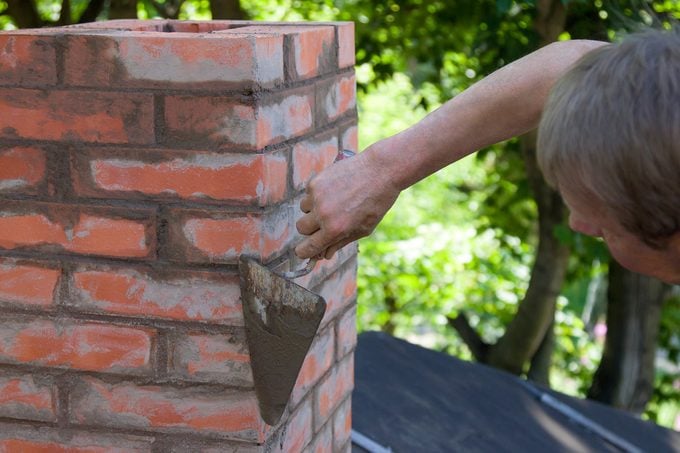Unsure where to start? Consider these 11 tips for checking, maintaining and improving your home’s most essential assets.

1. Replace HVAC filters
Your HVAC air filter keeps dust and other impurities from floating in your home’s air and helps keep your system clean and running efficiently. The filter should be changed every 30-90 days. American Standard Heating and Air Conditioning notes that replacing the filter is especially important to keep dust from accumulating on the coil and blower blades. A dirty filter also reduces the HVAC system’s efficiency, which leads to a higher utility bill. Plus, it can impact home comfort as the dirty filter limits air flow.
Another way to enhance your indoor air quality is to consider installing a whole-home air cleaner, one like American Standard’s AccuClean™, which can remove up to 99.98 percent of allergens, dust and even viruses circulating within your home.

2. Check gutters and downspouts
When frost is behind you, clean and inspect your gutters and downspouts for damage and debris. When properly maintained, they:
- Divert water away from your home’s foundation
- Prevent your eaves from rotting
- Block critters
- Protect your home from future rain damage
3. Inspect sprinklers or irrigation systems
Ensuring your outdoor watering systems are up and running saves resources in addition to doing the obvious work of nurturing your lawn and plants. Walk your property while manually running each zone of your system, looking for damaged or broken heads. You should also:
- Adjust the direction of nozzles as needed since constant moisture can damage your windows
- Eliminate standing water in your yard and around your foundation

4. Schedule or perform seasonal air conditional maintenance
Whether you DIY or hire a pro like an American Standard Customer Care Dealer to help your system last longer, keep your air conditioner running smoothly by, as we noted in Tip 1, by regularly changing the filter. If you feel uncomfortable handling any of these steps, don’t hesitate to call the professionals. It’s also important to:
- Have a professional clean the evaporator coil, usually found behind a door or panel above the blower motor. (Coil fins can be easily damaged if not handled with care.)
- Turn off the water supply to the humidifier when your air conditioner is in use
- Clean the evaporator drain line to remove blockage-inducing mold or algae using a wet/dry vac or a plumber’s snake
- Remove twigs, leaves and outdoor waste from on top of and around the unit
- Be sure there is at least a two-foot buffer around your outdoor unit
5. Look at driveways and paths
Freezing and thawing can wreak havoc on hardscaping, such as asphalt and concrete. Check walkways, paths and driveways for damage and run-of-the-mill wear and tear. And then:
- Make sure exterior concrete drains away from your home’s foundation
- Fill cracks with a concrete or asphalt crack filler
- Power-wash and seal repaired concrete after it’s warm outside
6. Examine roof shingles
Sometimes shingles disappear or get damaged during winter. Cracked, buckled, loose or missing shingles need to be replaced ASAP—especially since summer heat can cause further damage. It is also important to:
- Inspect and repair flashing around plumbing vents, skylights and chimneys
- Consider a roof replacement if yours is past its prime
7. Probe wood trim
Use a screwdriver to probe wood trim around windows, doors, decks and railings, checking for rot. Repair any damage before spring rain makes things worse. Additionally:
- Repaint and caulk after repairs
- Consider protecting your fascia by installing an aluminum wrap over your wood

8. Check your chimney
Inspect the outside of your chimney. Look for signs of damage and wear and tear and address it as soon as weather allows. This is also an ideal time to:
- Clean the flue of debris and buildup from fireplace use
- Use an ash vac to remove residual ash from your fireplace
- Sprinkle residual ash on flower beds—it’s a great source of nutrients
9. Look for signs of pests
From termites to skunks to mice, unwelcome insects and wildlife can lead to serious problems. Along the perimeter of your home, search for evidence of burrowing pests or disrupted soil near the foundation. Be sure to check sill at the base of your siding too. If a problem is found:
- Call animal control or a removal specialist
- Pest-proof your foundation by fixing cracks
- Repair leaking pipes and clean up standing water
- Seal gas, electrical and water—as well as air-conditioning—piping entry points
- Repair exterior cracks
- Seal around doors and windows
- Remove leaves and mulch from around the home’s foundation
- Stack wood 12 feet away

10. Examine the foundation thoroughly
Spring thaws can impact your foundation, and it takes more than routine caulking to address cracks. Although not all masonry cracks spell trouble, a foundation contractor should be the judge. Before making the call:
- Research the contractor’s customer reviews and Better Business Bureau
- Be prepared to bond cracks chemically via a two-part epoxy injection system
11. Paint and wash siding
Whether it’s a fresh coat of paint on your front door or a total color overhaul, painting and cleaning siding can enhance the appearance of your home and protect it from damage. Take the time to:
- Fix damage and cracks
- Remove dirt, grime and cobwebs using a hose or pressure washer
- Scrub trouble areas with soap and water
- Touch up your paint or hire a professional to address chipped, cracked, rusted or damaged areas
- Replace damaged siding
Want more ideas to help care for your home this spring and beyond? Visit American Standard’s Homeowning 01 for how-to videos, checklists, seasonal maintenance suggestions and DIY tips. Before you know it, you’ll not just master the basics, but also become a champion of household chores.
